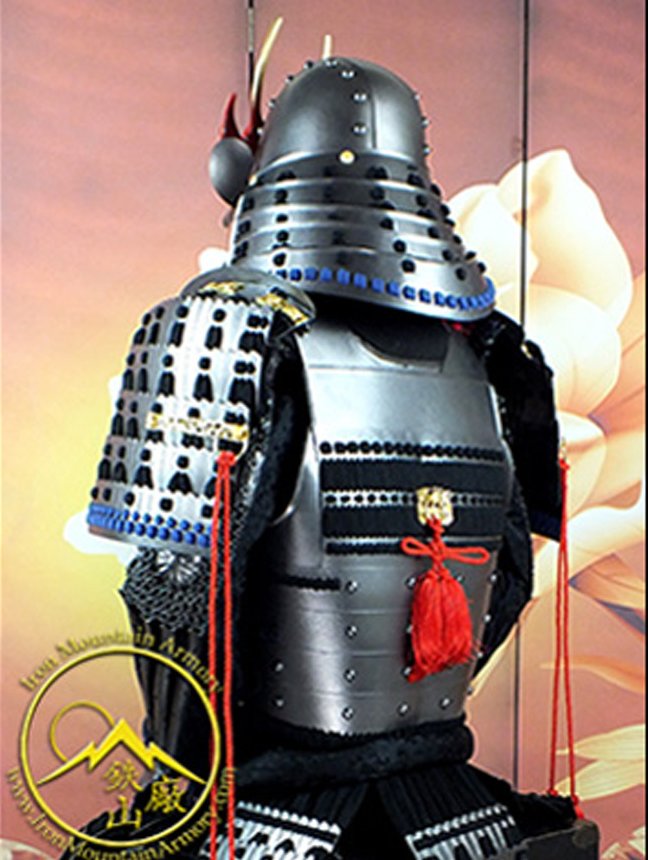Ancient History Of The Samurai Armor
Rafael - AncientPages.com - Japanese armor has a long and rich history. This goes all the way back to the 4th century. Over the centuries, these types of armor went through extreme developments since its introduction to warfare and the battlefield.
More than 150 years ago, the samurai class had officially dissolved. However, their elaborate and finely-design armor were still globally recognized as iconic pieces. These were also known for displaying the virtue and strength of the Japanese military.
The samurai warriors were known as an elite group of strictly yet well-trained individuals. They were also highly protected with fine armor. This was also true for the horses owned by these samurai warriors.
The Beauty Of The Samurai Armor
The samurai armor beauty and elegance were based on a specific visual culture. This culture placed a great deal of importance on the unique combination of delicacy and brutality.
Each of the elements on a warrior’s armor was personalized and significant. These pieces took months to create which made the pieces even more vital to the warrior. However, not many of these armor survived history; yet those that are still present are indeed wondrous to behold.
The History
The armor of a Japanese warrior is known to have evolved from the Korean and Chinese pieces. Helmets and cuirasses were produced in Japan as early as the 4th century.
During the years 794 to 1185 of the Heian period, these cuirasses evolved and developed into a more common style of armor that was utilized by the samurai class. It was called the do or dou. Makers of Japanese armor began utilizing leather with lacquer to weather-proof parts of the armor.
During the 16th century, Japan started trading with European countries which would be known as the Nanban trade. Through this, the samurai warriors were able to acquire European armor such as the comb morion and cuirass. They were able to modify these together with domestic armor since it offers increased protection against the Tanegashima.
In the year 1543, the Portuguese introduced the tanegashima which changed the course of Japanese warfare. This led armor makers to alter the design of their armor to plate armor. Bullet-resistant armor were also created and these were called the tameshi gusoku. It allowed samurai warriors to continue wearing their armor despite using firearms.
Custom Samurai Armor With Samurai Kabuto Helmet. Image Credit: Katanas For Sale
For the Sengoku era, this ended around the 1600’s. This time was when Japan united and entered the peaceful times of the Edo period. Despite the peace, samurai warriors still utilized the lamellar and plate armor to exhibit their status. However, the classic armor didn’t have further use for battles.
During the Edo period, portable, lightweight, and hidden armor were used as a form of personal protection. This was due to the civil strife, peasant revolts, duels, and assassinations that occurred. People during this period often utilized armor like the kusari katabira as well as armored sleeves that could easily be worn under normal clothing.
See also:
Samurai Swords: Katana And Wakizashi And Their Long Tradition
William Adams: The Journey To Becoming The First White Samurai
Katana ‘Soul Of The Samurai’ – Most Famous Japanese Sword With Long Tradition
Many Samurai Had Swords With Secret Crucifixes And Hidden Christian Symbols To Avoid Persecution
The samurai from this specific period were in charge of the country’s internal security. They were required to wear different types of shin and arm protection, kusari gusoku, and hachi gane or forehead protectors.
Armor was utilized until the end of the Meiji period; the last use of the samurai armor was in the year 1877 during the Satsuma Rebellion.
Armor Construction
The Japanese armor were commonly made using small iron, leather scales, or plates. These were connected to each other via macrame cords or rivets. The cords were usually made from braided silk, leather, or chain armor.
Noble families often utilized silk cords that were used to shape certain colors and patterns of silk thread. A lot of these cords were made from over a hundred strands of silk. The plates of the armor were commonly attached to a leather backing or a piece of cloth. The Japanese armor plates were also created to be as lightweight as possible. This was necessary since the samurai did a lot of things such as archery and horse riding.
The armor was often brightly lacquered to keep this safe against Japan’s harsh climate. Kusari or chain armor was also used to produce individual armor pieces.
Components Of The Japanese Samurai Armor
Kabuto: The Samurai Helmet - The kabuto was the most important part of the samurai armor since it was the best way to intimidate the enemy, Also, it was taken as a trophy by the victor when a slain warrior was decapitated by his opponent.
Often, the kabuto was made of several plates. However, helmets during the Heian period and after the full-plate armors were introduced, makers of Japanese armors created some excellent examples of single-plated helmets.
The kabuto had two essential parts which included the hachi (bowl) and the shikoro (neck-guard).
Do: The Cuirass
The do or cuirass had various construction throughout the different periods in Japanese history. These were made of scales, lamellae, or full-plate and was the largest part of the Japanese armor.
The kusazuri or the protection for the thighs were attached to the bottom of the cuirass using suspending cords. The sode or shoulder guards protect the shoulders and arms. The construction of the sode also differed from era to era.
For armor adornments, these were often family crests or clan symbols including crescent moons or chrysanthemums. Others were dragons, lions, and other fierce beasts. Some used religious symbols such as patron gods and famed bodhisattvas.
Men Yoroi: The Face Armor
The men yoroi or face armor was highly popular during this period. However, only a few samurai used these on the battlefield. This was because the samurai wanted their enemy to see their faces. Under the men yoroi was a neck and throat armor and could be detached to the men yoroi or attached as one element.
Kote: Armored Sleeves
Until the mid-12th century, the kote or armored sleeves only had one sleeve. It was worn on the left arm to provide protection from the bow-string. On the second part of the period, sleeves for both arms were developed. The functions and constructions were altered to add protection against edged weapons. Tekko or gauntlets could also be detached from the kote, but these were usually attached to it to form one piece of armor.
Suneate: Greaves
The suneate protects the legs; however, the earliest versions of these did not provide protection for the knees. Around the 12th century, the first knee guards were developed. These were made from steel or even lacquered leather. Oftentimes, the kote and suneate were made as a set with the same design.
Haidate: Cuisses
The haidate was the last addition to the samurai armor. It was also created around the 13th century. The haidate was designed to protect the thighs although it was rarely used on the battlefield. The fabric used for this was also the same as that of the kote and the suneate.
Written by – Rafael - AncientPages.com Contributor
Copyright © AncientPages.com All rights reserved. This material may not be published, broadcast, rewritten or redistributed in whole or part without the express written permission of AncientPages.com
More From Ancient Pages
-
 On This Day In History: The Battle Of Actium – Birth Of The Roman Empire – Sep 2, 31 BC
News | Sep 2, 2015
On This Day In History: The Battle Of Actium – Birth Of The Roman Empire – Sep 2, 31 BC
News | Sep 2, 2015 -
 Griffins Were Mythical Gold-Guarding Hybrid Creatures Known For At Least 5,000 Years
Ancient Symbols | Mar 9, 2021
Griffins Were Mythical Gold-Guarding Hybrid Creatures Known For At Least 5,000 Years
Ancient Symbols | Mar 9, 2021 -
 Was King William II Murdered In The New Forest?
Featured Stories | Aug 5, 2021
Was King William II Murdered In The New Forest?
Featured Stories | Aug 5, 2021 -
 4th-Century Roman Coin And Pub-Like Structure With Heating System Excavated In Slovakia
Archaeology | Aug 11, 2020
4th-Century Roman Coin And Pub-Like Structure With Heating System Excavated In Slovakia
Archaeology | Aug 11, 2020 -
 Amaterasu: Shinto Goddess Of The Sun And Priestess-Queen Sister To Controversial Susanoo God Of Storms
Featured Stories | Jan 25, 2019
Amaterasu: Shinto Goddess Of The Sun And Priestess-Queen Sister To Controversial Susanoo God Of Storms
Featured Stories | Jan 25, 2019 -
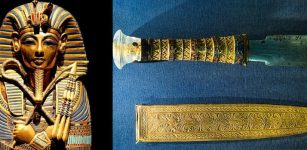 Tutankhamun Had An Ancient Dagger From Outer Space
Archaeology | Jun 1, 2016
Tutankhamun Had An Ancient Dagger From Outer Space
Archaeology | Jun 1, 2016 -
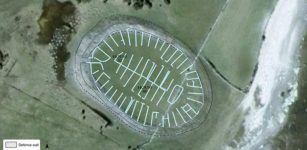 1500-Year-Old Mystery Of The Sandby Borg – Excavation Of Ringfort On Öland, Sweden
News | Jan 1, 2014
1500-Year-Old Mystery Of The Sandby Borg – Excavation Of Ringfort On Öland, Sweden
News | Jan 1, 2014 -
 Mount’s Bay, Lyonesse, Langarroc: Legendary Submerged Lands And Buried Towns Of Cornwall
Featured Stories | Apr 21, 2022
Mount’s Bay, Lyonesse, Langarroc: Legendary Submerged Lands And Buried Towns Of Cornwall
Featured Stories | Apr 21, 2022 -
 Lost City Of Alexander The Great Found After 2,000 Years In Iraq
Archaeology | Oct 1, 2017
Lost City Of Alexander The Great Found After 2,000 Years In Iraq
Archaeology | Oct 1, 2017 -
 Massive Underground Anomaly – Iron Ages Temples And Seat Of Legendary Ulster Kings Discovered At Navan Fort?
Archaeology | Jul 21, 2020
Massive Underground Anomaly – Iron Ages Temples And Seat Of Legendary Ulster Kings Discovered At Navan Fort?
Archaeology | Jul 21, 2020 -
 6,000-Year-Old Bizarre, Mouthless ‘Alien’ Mask Unearthed In “The Salt Pit” Settlement In Northeast Bulgaria
Archaeology | Nov 20, 2020
6,000-Year-Old Bizarre, Mouthless ‘Alien’ Mask Unearthed In “The Salt Pit” Settlement In Northeast Bulgaria
Archaeology | Nov 20, 2020 -
 Birds – Mysterious Avian Messengers That Symbolized Bridge Between Humans And Gods In World Beliefs
Myths & Legends | Aug 21, 2021
Birds – Mysterious Avian Messengers That Symbolized Bridge Between Humans And Gods In World Beliefs
Myths & Legends | Aug 21, 2021 -
 Qanat Firaun -‘Canal Of The Pharaohs’ Is The Ancient World’s Longest Underground Tunnel
Featured Stories | Mar 10, 2022
Qanat Firaun -‘Canal Of The Pharaohs’ Is The Ancient World’s Longest Underground Tunnel
Featured Stories | Mar 10, 2022 -
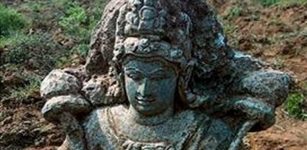 10th Century Sculpture Of Sun God Surya Accidentally Found In Farmland In Andhra Pradesh
Archaeology | Nov 16, 2020
10th Century Sculpture Of Sun God Surya Accidentally Found In Farmland In Andhra Pradesh
Archaeology | Nov 16, 2020 -
 Roman Empire’s Emerald Mines In The Egyptian Eastern Desert – New Evidence
Archaeology | Mar 2, 2022
Roman Empire’s Emerald Mines In The Egyptian Eastern Desert – New Evidence
Archaeology | Mar 2, 2022 -
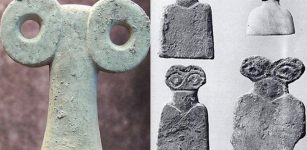 Remarkable Ancient Statues From The Eye Temple – Unique Legacy From Tell Brak, Syria
Artifacts | Jul 20, 2018
Remarkable Ancient Statues From The Eye Temple – Unique Legacy From Tell Brak, Syria
Artifacts | Jul 20, 2018 -
 Man In Sweden Finds Viking Age Skeleton In His Garden
Archaeology | Jun 30, 2023
Man In Sweden Finds Viking Age Skeleton In His Garden
Archaeology | Jun 30, 2023 -
 Mysterious Scottish Stone Circles On Orkney Were Used To Something Very Different Than Previously Thought
Archaeology | Sep 24, 2017
Mysterious Scottish Stone Circles On Orkney Were Used To Something Very Different Than Previously Thought
Archaeology | Sep 24, 2017 -
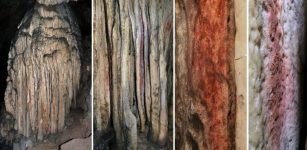 Neanderthals Painted Andalusia’s Cueva de Ardales – New Study Confirms Their Cave Art
Archaeology | Aug 3, 2021
Neanderthals Painted Andalusia’s Cueva de Ardales – New Study Confirms Their Cave Art
Archaeology | Aug 3, 2021 -
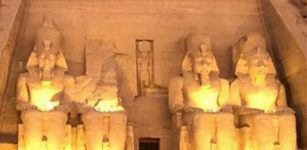 Magnificent Solar Alignment Phenomenon In Abu Simbel – The Sun Illuminates The Face Of Pharaoh Ramses II
Featured Stories | Nov 11, 2020
Magnificent Solar Alignment Phenomenon In Abu Simbel – The Sun Illuminates The Face Of Pharaoh Ramses II
Featured Stories | Nov 11, 2020


